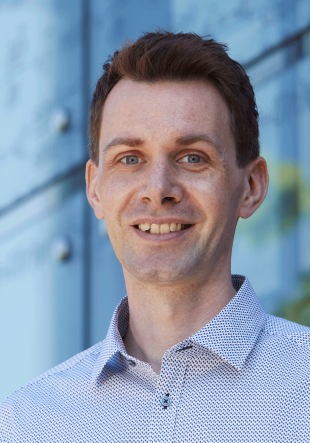Near-field coupled nonlocal optical metasurface for versatile polarization and bandstructure manipulations
Overview
Recent advances in the modern nanotechnology gave birth to ‘thin-flat-optics’ elements (the so-called optical metasurfaces), based on nanoscale structures, capable of versatile tailoring on the responses to light such as wave-fronts, amplitudes, polarization, and frequency. Despite the extremely reduced dimensions of the ‘flat-optics’ elements, the working principle mostly remains being the Huygens-Fresnel principle, virtually the same to traditional optical elements. However, there exists a major difference between the ‘flat-optics’ elements compared to the traditional ones. The traditional optical lenses manipulate wavefronts through the length of optical path inside the bulk material, while ‘flat-optics’ devices rely on resonances effects wherein drastic amplitude and phase changes can be manifested in the spectral responses. These spectral responses are exerted by the subwavelength optical resonances residing on the optical nano-resonators.An analog of the subwavelength optical resonances are the electron orbits sitting on lattice of atoms in solids. Akin to the electron’s orbits, the optical resonances could ‘talk’ to each other through near-field couplings and build up a collective response unprecedented in traditional optical elements, for instance chiral metasurfaces that are only responsive to one handedness of circular polarizations. In this proposal, we are going to scrutinize the theoretical framework and design logic for taming the crosstalk between optical nano-resonators and further develop their prospect for wave manipulations in both linear and nonlinear applications. A tailored inter-unit coupling with a strong nonlocal response could effectively modify both the scattering properties and the wave propagation inside the metasurface. Owning to the extreme subwavelength feature size in nano-scale photonic resonators, new types of spin-orbital coupled metasurfaces with strongly enhanced circular dichroism, as well as strongly enhanced linear and nonlinear light-matter interactions with photonic topological flat bands are envisioned and will be studied here.
DFG Programme Research Grants
Key Facts
- Grant Number:
- 514785315
- Research profile area:
- Optoelektronik und Photonik
- Project type:
- Forschung
- Project duration:
- 01/2023 - 12/2026
- Funded by:
- Deutsche Forschungsgemeinschaft (DFG)
- Website:
-
DFG-Datenbank gepris

